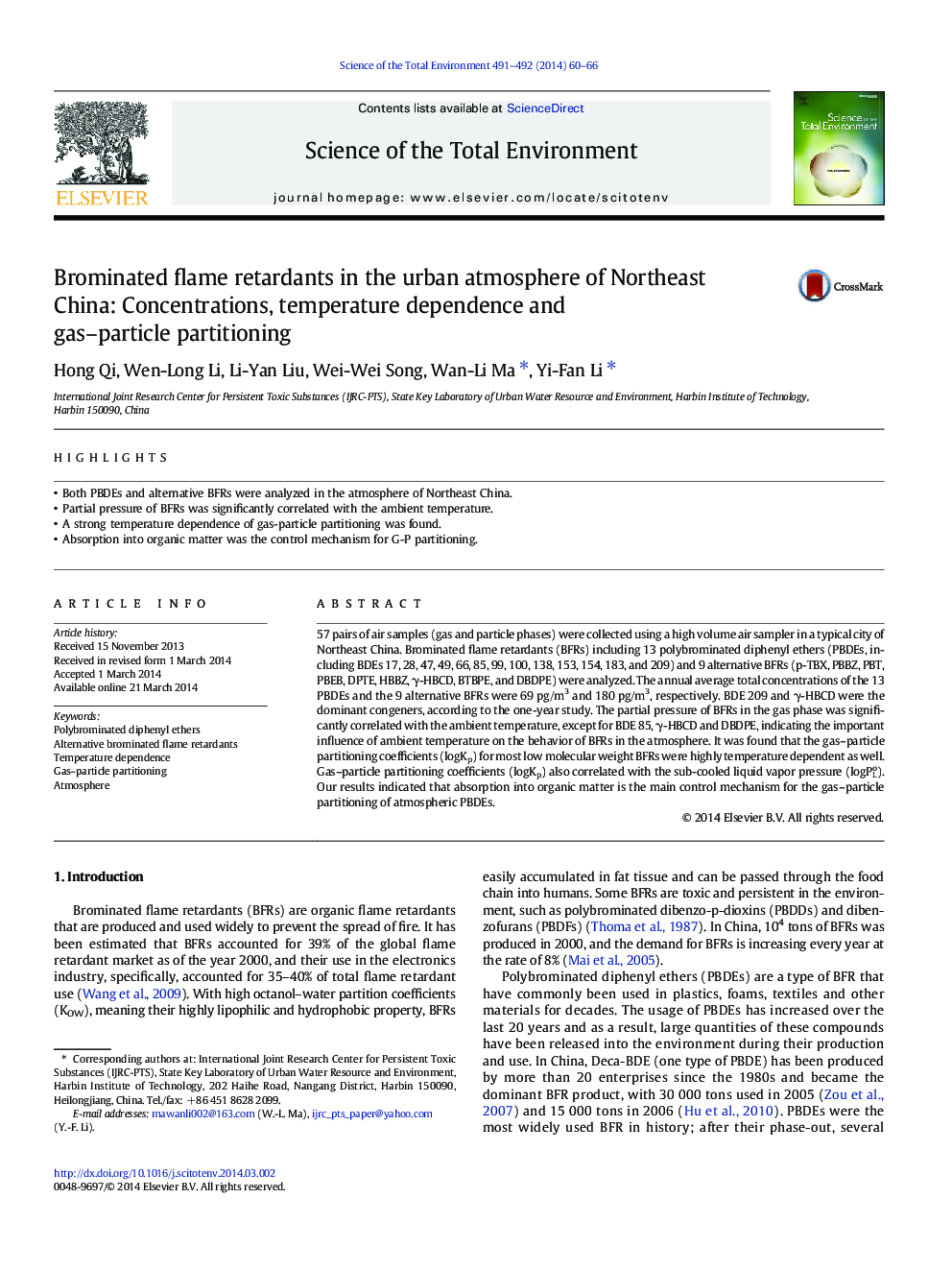| Article ID | Journal | Published Year | Pages | File Type |
|---|---|---|---|---|
| 4428452 | Science of The Total Environment | 2014 | 7 Pages |
•Both PBDEs and alternative BFRs were analyzed in the atmosphere of Northeast China.•Partial pressure of BFRs was significantly correlated with the ambient temperature.•A strong temperature dependence of gas-particle partitioning was found.•Absorption into organic matter was the control mechanism for G-P partitioning.
57 pairs of air samples (gas and particle phases) were collected using a high volume air sampler in a typical city of Northeast China. Brominated flame retardants (BFRs) including 13 polybrominated diphenyl ethers (PBDEs, including BDEs 17, 28, 47, 49, 66, 85, 99, 100, 138, 153, 154, 183, and 209) and 9 alternative BFRs (p-TBX, PBBZ, PBT, PBEB, DPTE, HBBZ, γ-HBCD, BTBPE, and DBDPE) were analyzed. The annual average total concentrations of the 13 PBDEs and the 9 alternative BFRs were 69 pg/m3 and 180 pg/m3, respectively. BDE 209 and γ-HBCD were the dominant congeners, according to the one-year study. The partial pressure of BFRs in the gas phase was significantly correlated with the ambient temperature, except for BDE 85, γ-HBCD and DBDPE, indicating the important influence of ambient temperature on the behavior of BFRs in the atmosphere. It was found that the gas–particle partitioning coefficients (logKp) for most low molecular weight BFRs were highly temperature dependent as well. Gas–particle partitioning coefficients (logKp) also correlated with the sub-cooled liquid vapor pressure (logPLo). Our results indicated that absorption into organic matter is the main control mechanism for the gas–particle partitioning of atmospheric PBDEs.
